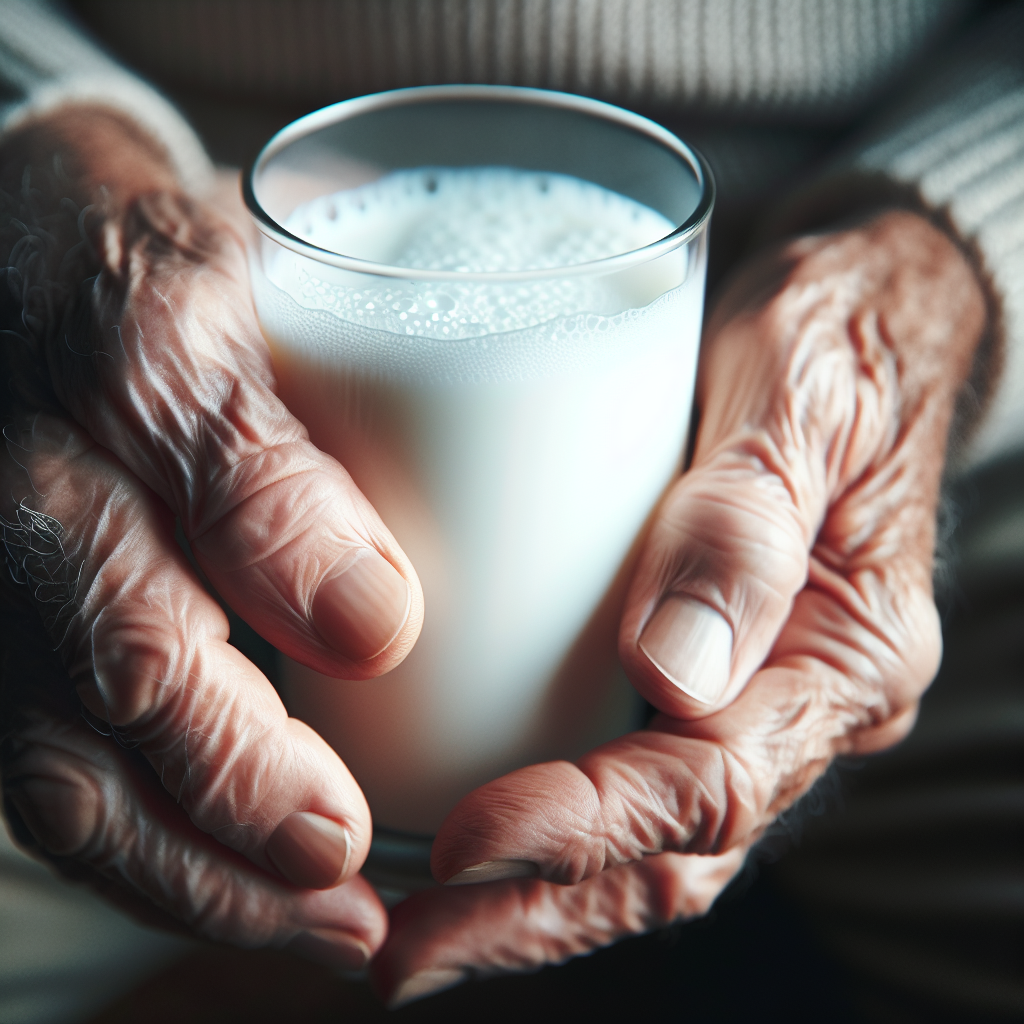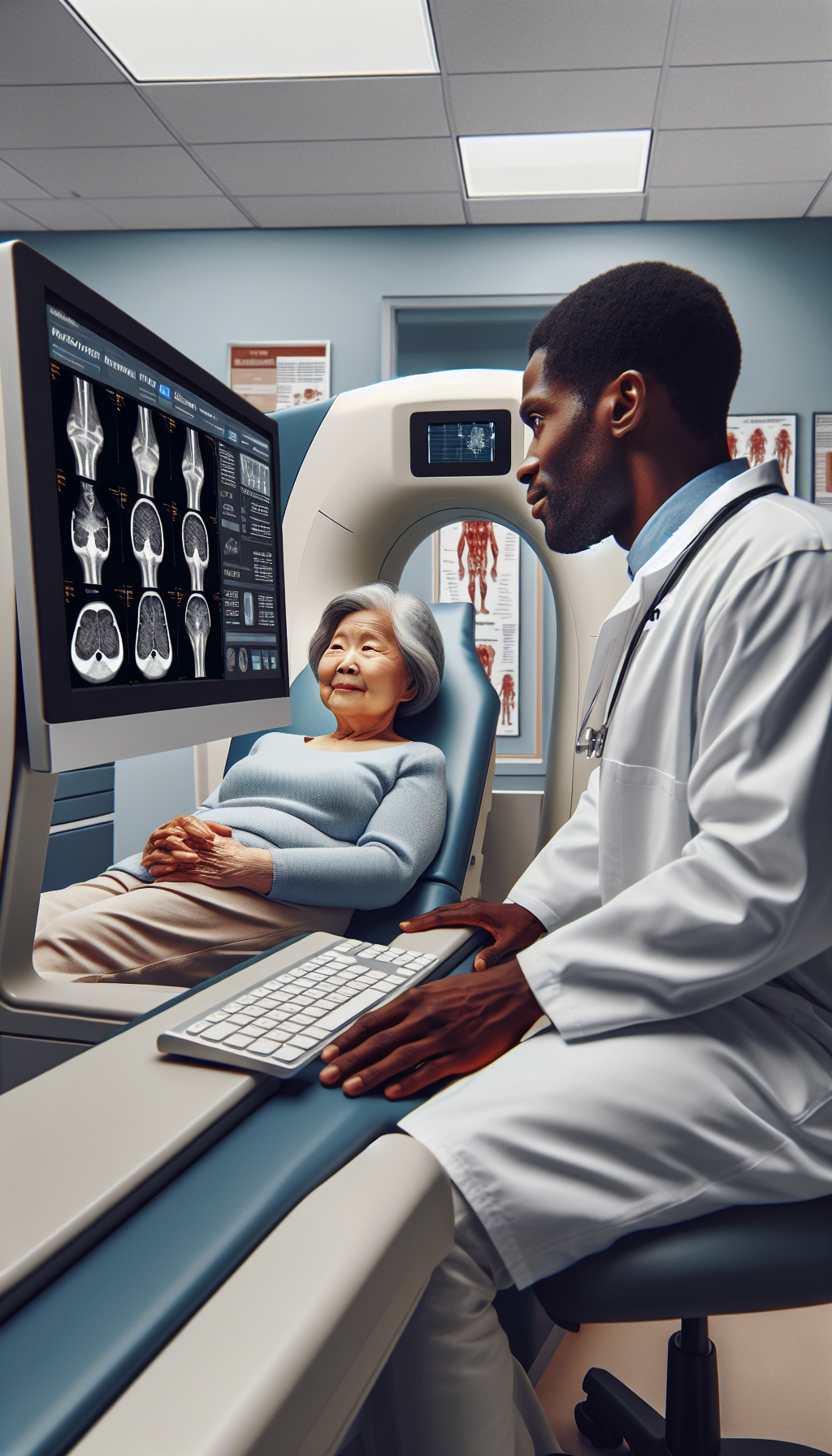Bone health is a critical aspect of aging that often doesn’t receive the attention it deserves. As we age, our bones can become more fragile due to a decrease in bone density, a condition that can lead to increased frailty and a higher risk of fractures. Understanding the causes of bone density issues in the elderly and implementing strategies for prevention and management is essential for maintaining mobility and quality of life. This article delves into the complexities of bone density challenges and offers actionable advice for those looking to bolster their bone health.
Understanding Bone Density Decline
Bone density is the measurement of the amount of bone mineral in bone tissue. The higher the density, the stronger the bone. As we age, our bones naturally lose density, but this process can be accelerated by a variety of factors. In the elderly, the risk of developing osteoporosis—a condition characterized by low bone mass and deterioration of bone tissue—increases significantly.
Several factors contribute to the decline in bone density with age:
- Hormonal Changes: In women, the decrease in estrogen after menopause can lead to bone loss, while in men, lower levels of testosterone can have a similar effect.
- Nutritional Deficiencies: Inadequate intake of calcium and vitamin D is associated with a higher risk for bone density loss.
- Physical Inactivity: Weight-bearing and muscle-strengthening exercises are crucial for maintaining bone density, and a lack of physical activity can lead to bone mass reduction.
- Lifestyle Choices: Smoking and excessive alcohol consumption have been linked to bone density loss.
Prevention Strategies
Prevention should be the cornerstone of managing bone health. There are several steps that can be taken to help maintain or increase bone density:
-
Nutrition: A balanced diet rich in calcium and vitamin D is crucial. Dairy products, leafy greens, and fortified foods are excellent sources of calcium, while vitamin D can be obtained through sunlight exposure and dietary sources such as fatty fish and fortified milk. For more on bone health, Avix Health’s bone health guide offers comprehensive advice.
-
Exercise: Regular weight-bearing and muscle-strengthening exercises are some of the most effective ways to maintain bone density. Activities such as walking, dancing, or lifting weights can help keep bones strong.
-
Lifestyle Modifications: Quitting smoking and limiting alcohol intake are vital steps in preserving bone health.
-
Monitoring Bone Density: Regular bone density screenings can help detect problems early, allowing for timely intervention.
Management for Those Already Affected
For those already experiencing bone density issues, management focuses on slowing progression and preventing fractures. Treatment may include:
-
Medications: Prescription medications can help to strengthen bones. Bisphosphonates are commonly used, but new medications are continually being developed.
-
Supplementation: In addition to dietary changes, calcium and vitamin D supplements may be recommended.
-
Fall Prevention: Improving home safety to prevent falls is essential, as falls can lead to fractures in those with low bone density.
Integrating Bone Health with Overall Wellness
The health of our bones is intricately connected to our overall well-being. Strategies that support bone density can also benefit other aspects of health:
-
Exercise: Regular physical activity not only strengthens bones but also improves cardiovascular health, muscle function, and balance, reducing the risk of falls and fractures. Learn about the importance of regular exercise for brain health, which is another critical aspect of aging.
-
Nutrition: A diet that supports bone health often aligns with recommendations for cardiovascular and digestive wellness. Specific nutrients, such as omega-3 fatty acids found in fish, have broad health benefits.
-
Lifestyle Choices: Smoking cessation and moderate alcohol use favor not only bone health but also a range of other health outcomes, from improved lung function to a reduced risk of certain cancers.
The Role of Technology and Innovation in Bone Health
Advancements in medical technology have led to better diagnostic tools and treatments for bone density issues. Innovations such as improved imaging techniques and telemedicine have made it easier to monitor and manage bone health.
Collaborative Care
Managing bone density issues often requires a collaborative approach. Working with healthcare providers, including primary care physicians, endocrinologists, and nutritionists, can provide a multi-faceted approach to care, ensuring that all aspects of health are addressed.
External Resources for Further Reading
- The National Osteoporosis Foundation provides a wealth of information on bone health, including tips for prevention and management of osteoporosis.
- The International Osteoporosis Foundation offers global perspectives on bone health and the latest research findings.
Conclusion
Maintaining bone density is a vital part of aging healthily. By understanding the causes of bone density loss and implementing strategies for prevention and management, the elderly can protect their bones and reduce the risk of fractures. It’s never too late to start caring for your bones; with the right blend of lifestyle changes, dietary habits, and medical care, bone health can be preserved, ensuring a stronger and more resilient body for years to come.
For more information on related topics, explore how weight-bearing exercises impact bone health or read about the benefits of resistance training for osteoporosis prevention. Together, these resources will provide a holistic view of how to maintain bone density and overall health as we age.



